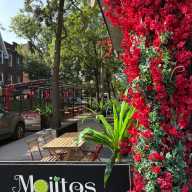By Gabriel Rom
Dr. Charles Conte, director of Surgery at Forest Hills Hospital and a surgical oncologist, often uses a translating service to help communicate with his patients.
For Conte, who arrived at the hospital in 2010, communicating across language barriers is a challenge unique to Queens. Before coming to Forest Hills, he spent over 20 years at the North Shore University Hospital in Manhasset, where translation issues were far from his mind.
“There is a huge diversity at our hospital,” Conte said. “It’s certainly different here than it was in Long Island.”
While the population he serves in Queens is dramatically different from Manhasset — Forest Hills Hospital’s patients come predominantly from Asian, Hispanic and Russian communities — the rate of female breast cancer in central and western Queens is actually lower.
In Forest Hills and Ridgewood, the average number of breast cancer cases for women under 50 is 41.9 per 100,000 annually; for women over 50 the rate is 295.9 per 100,000. Both figures are a hair below the Queens average, and substantially lower than the city average, according to 2013 statistics from the city’s Department of Health.
Explaining why the comparatively wealthy community of Manhasset has a higher rate of cancer than is seen in his stretch of Queens, Conte cites diet as a major factor.
“A higher socio-economic level will raise one’s risk for breast cancer and that has to do with having a rich diet,” Conte said.
Studies have indicated that people who have diets heavy in fat content may have a higher propensity for developing breast cancer.
As far as genetic risk, only about 10 percent of breast cancer cases are genetically predetermined, according to Conte. A genetic mutation known as the BRCA mutation, which dramatically increases a woman’s likelihood of breast cancer, is relatively common amongst Ashkenazi Jewish women. But as Forest Hills’ Jewish community is primarily Bukharian, Conte said “he hasn’t seen any local risk factors.”
The cases that are hardest for Conte are the ones that are difficult to predict. He recalls a particularly upsetting instance of a 29-year-old Russian woman who had advanced-stage breast cancer. “She was too young to even think about screening, and that was tough,” Conte said. The woman has since recovered.
Regardless of the cancer rate in a community, Conte emphasizes the necessity of screening for younger women.
“Once you turn 35,” he said, “just start.”
Emphasizing the importance of early screening, Forest Hills Hospital offers
The hospital also offers a new form of treatment called brachytherapy, or internal radiation therapy, which is a new and non-invasive technique for breast cancer treatment.
“If someone is struggling financially, they can qualify for screening and treatment at a reduced cost,” Conte said.
The hospital has a financial assistance program in which all the procedures that the hospital offers are offered at low cost or no cost based on financial need.
“If someone comes who can’t afford the treatment, we can make financial allowances.,” said Ted Lehmann a spokesman for the Hospital. “No one gets turned away, and fees can always be adjusted according to financial need.”
Reach reporter Gabriel Rom by e-mail at grom@
































